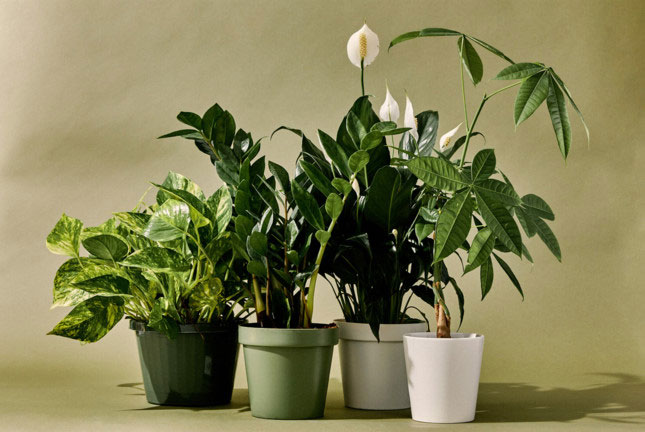How does plants 'breathe'?
Scientists have discovered how plants create leaf networks of air - lung channels - to transport carbon dioxide (CO 2 ) to their cells.
Botanists have known since the 19th century that leaves with pores - called stomata - contain a complex internal network of air channels. But so far, it has not been understood how these channels formed in the right place to provide a stable amount of CO2 for every cell of plants.

The more stomata the leaves have, the more air they form.
A new study by scientists at the University of Sheffield's Sustainable Food Institute, published in Nature Communications, uses genetic manipulation techniques to reveal that the more gas the leaves have, the more more and more air spaces are formed. The channels act as bronchioles - small passages that carry air to the exchange surface of human and animal lungs.
In collaboration with colleagues at the University of Nottingham and Lancaster University, they showed that the movement of CO 2 through pores could very well determine the shape and scale of the air channel network.
This finding marks a big step in our understanding of how the inner structure of leaves and how the functions of tissues affect how they grow - there may be branching beyond birth. Learn plants, to areas like evolutionary biology.
Professor Andrew Fleming from the Institute of Sustainable Food at the University of Sheffield said: 'So far, the way plants form their complex air channel models is still a surprising mystery for scientists. learn plants. This important finding shows that the movement of air through the leaves forms their internal activity - which is significant for evolutionary studies in plants.
The human breeding of wheat using less water has inadvertently affected plant breathing. That said, we can target these air canal networks to develop crops that can survive the harsh droughts of climate problems. "
Dr. Marjorie Lundgren at Lancaster University said: 'For a long time, scientists have suspected that the development of stomata and the development of space in a leaf are linked. However, we are not really sure which ones affect what. It is like the question "is the egg first or is it first"? Using a set of intelligent experiments related to CT X-ray image analysis, our collaborative team answered these questions using species with very different leaf structures. They have shown that stomata really need to exchange gas to expand air space. This draws a much more interesting story, involving physiology. "
- Breathing deeply helps to reduce anxiety and stress
- Breathe through your nose with what benefits?
- Video: What will your lungs do if you breathe deeply?
- If you thought growing a houseplant could purify the air, you're wrong!
- 6 recipes look ridiculous but make life easier to breathe
- Video: How will astronauts on Mars breathe?
- The project turns trees into multi-purpose biological sensors
- Small tips from hiccups right away
- Trees also behave like people
- Masks help people breathe underwater
- 80,000 species of plants on Earth are about to become extinct
- How is 'that' in plants?
 Why do potatoes have eyes?
Why do potatoes have eyes? 'Tragedy' the world's largest carnivorous life: Death becomes ... public toilet
'Tragedy' the world's largest carnivorous life: Death becomes ... public toilet Tomatoes were once considered 'poisonous' for 200 years
Tomatoes were once considered 'poisonous' for 200 years Detecting microscopic parasites on human face
Detecting microscopic parasites on human face